
Enhancing Mobile Inventory Management for 3500 +
Auction Houses to Drive Revenue through Increased Bids
I led the redesign for our mobile app, focusing on driving bid increases to boost revenue. Presented to stakeholders and executives, it emphasizes seamless integration with the desktop version and prioritizes quick, inventory-centric actions while aligning with e-commerce patterns. As we're currently building this, we plan to measure its impact post-launch by tracking adoption rates among auctioneers and monitoring the performance of auctions conducted through the app compared to previous ones. Additionally, we'll gather feedback from both auctioneers and bidders to identify areas for improvement and ensure ongoing refinement of the platform.
ROLES
Product Designer
TOOLS
Figma, Miro
TIMELINE
August & September 2023
CONTEXT
Wavebid, as part of the ATG suite, offers an end-to-end platform for auctions. The mobile app complements the desktop SaaS product, with a primary emphasis on inventory management within the auction process which was originally created by engineers and stakeholders.
PROBLEM
Misaligned Primary Feature:
Prioritizing event creation over media management overlooks a crucial opportunity and adds additional steps. Auctioneers primarily use the mobile application for inventory cataloging and management, yet neglecting media enhancement limits buyer attraction. Internal research indicates that higher-quality photos correlate with increased bids and buyer interest in lots.
User Experience Challenges:
During our audit of the mobile application and discussions with our client services team, who directly engage with our Auctioneers, it became evident that the app's usability is challenging. Users find it cumbersome, confusing, and lacking clear direction, hindering their ability to effectively navigate and utilize its features.
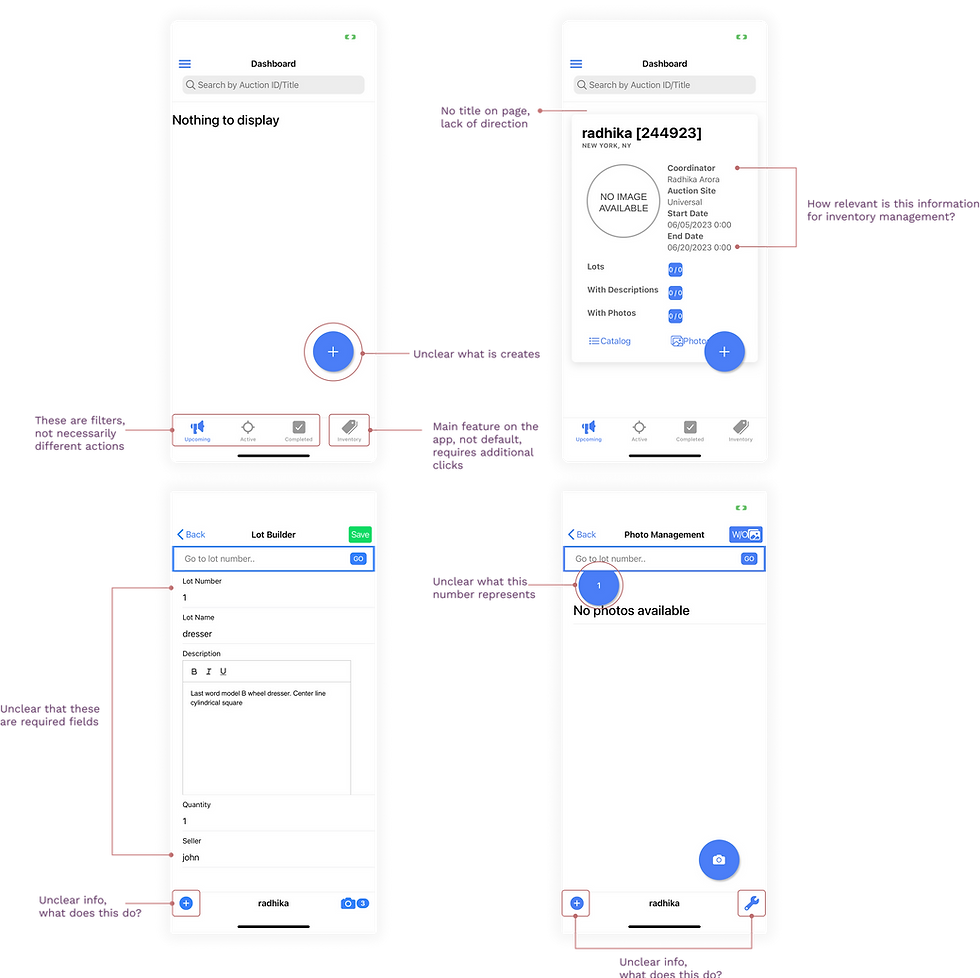
How can we design an intuitive mobile inventory app that pushes auctioneers to include more media and detailed information, thereby enhancing buyer engagement and increasing bids at auctions?
GOALS
BUSINESS GOAL
Attract and Get More Bids to increase revenue
Enhancing user experience and giving auctioneers the tools to help them create inventory that is accurate with detailed information and better quality media will attact more bids.
USER GOAL
Streamlined Pre-Auction Experience
Providing auctioneers with the tools and features needed to quickly, efficiently, and accurately create lots with high quality media that brings them more bids and buyers when managing 1000+ inventory lots per auction.
USER JOURNEY
The end goal for both user types is to upload/ add/edit lot details, while their workflow trigger varies slightly. A general journey would look like:

Adding and uploading media is the primary feature we are trying to sell, we want to offer them all of the resources needed for users to have the best quality photos and videos to attract buyers.

COMPETITOR ANALYSIS & CONCEPT ITERATIONS
My primary focus was understanding the user experience, envisioning their journey, and optimizing the app's functionality for efficient inventory management.
-
Inspiration and Market Research: To ensure our design aligns with industry standards and user expectations, I studied other successful applications, including but not limited to: FB Marketplace, eBay, Etsy, Airbnb, Dropbox, Figma, Coinbase, and YouTube. Additionally, I examined mobile application patterns for both iOS and Android, given that we were developing a React Native application. This comprehensive analysis enriched our approach to create a superior user experience.
-
User-Centric Analysis: I delved into the minds of our users, seeking answers to questions such as:
-
What do they value most?
-
What do they expect when opening the app for large-scale inventory management?
-
How can we streamline and automate their tasks?
-
What actions are of paramount importance, and what are secondary?
-
Which features should be readily accessible on mobile, and which are better suited for the desktop app?
-

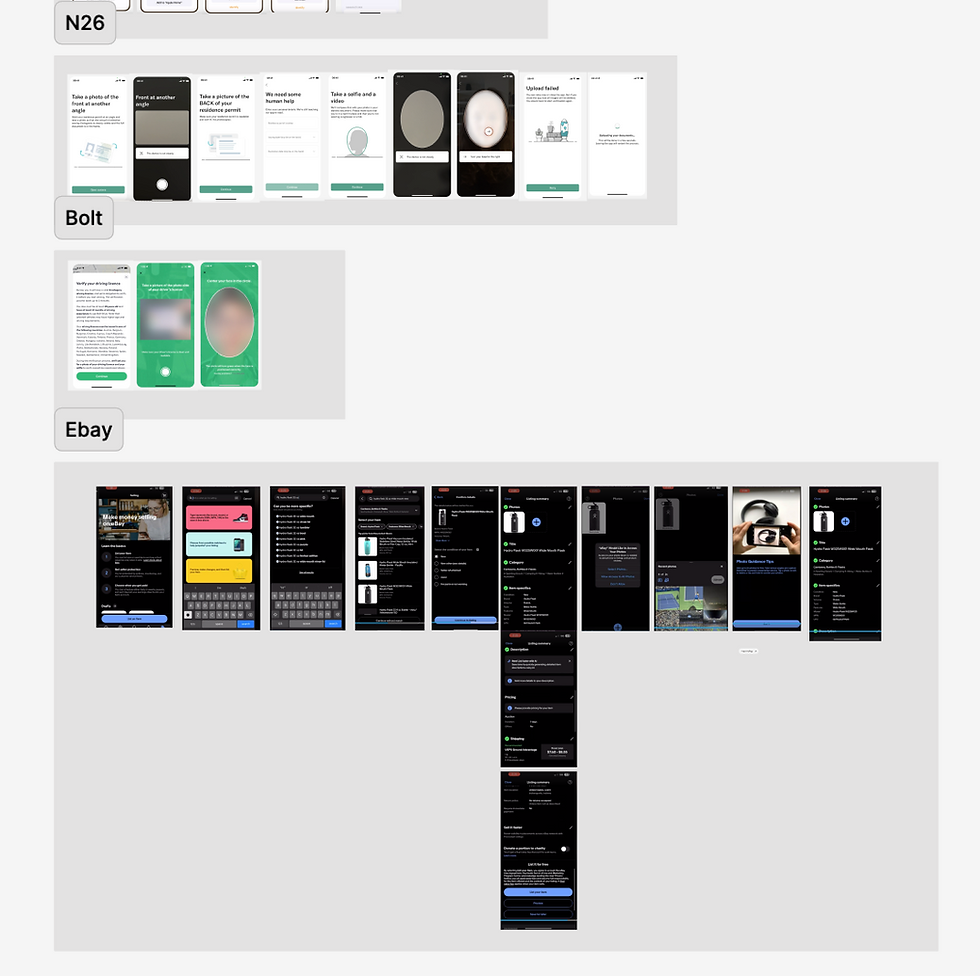


Landing Screen/Home Page:


Option 1
Provide users with an overview
of how their inventory and auctions are preforming instantly, quickly and on the go
Option 2
Provide users instantly with a list of all their inventory and allow them to edit, view, create and even filter
Decided to go with Option 2 because:
-
directly access to the inventory which is the primary feature of the app
-
all actions on one page, so less amount of clicks
-
MVP showing data will take additional time- later iterations we can add
Create Inventory:


Option 1
Step by step flow allowing users a more guided process to put in different types of meta data
Option 2
Overview page to give flexibility to users to put in as much to as little information as they can.
Media Management
Decided to go with Option 2 because:
-
Allows users to put in as much to as little information while on the phone as they may not have with them on the go and can fill out when on the computer
-
direct focus on Media Management

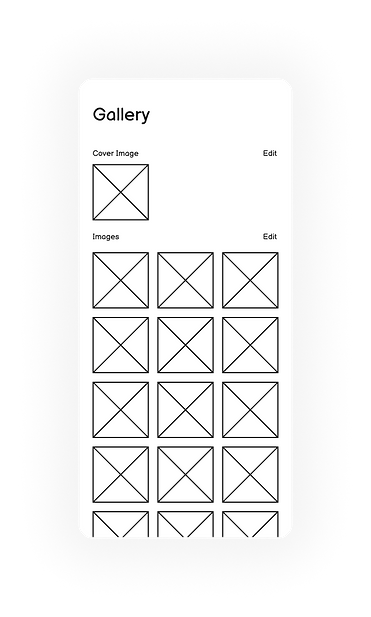
Option 1
Bigger View to see order + edit functionality
Option 2
Provide users instantly with a list of all their inventory and allow them to edit, view, create and even filter
Decided to go with Option 1 because:
-
Clearly points out the cover image
-
Big resolution helps to point out quality of image
-
Clear options for Individual and bulk editing
DESIGN SYSTEMS
We adopted ATG's branding for Wavebid to ensure consistency across all company products, although the branding was initially created for marketing purposes. The design system we utilized was originally tailored for e-commerce websites, but we reimagined it to suit SaaS/work tools. This involved adjustments such as transitioning text styles and buttons from all uppercase to sentence case, as well as introducing rounded corners for buttons to represent a more friendly visual look . While this marked the beginning of our efforts, we continue to iterate and implement changes throughout the design process to optimize efficiency and consider all potential use cases.
Design Components used: Consistency, Best Practices, Accessibility, Brand Communication
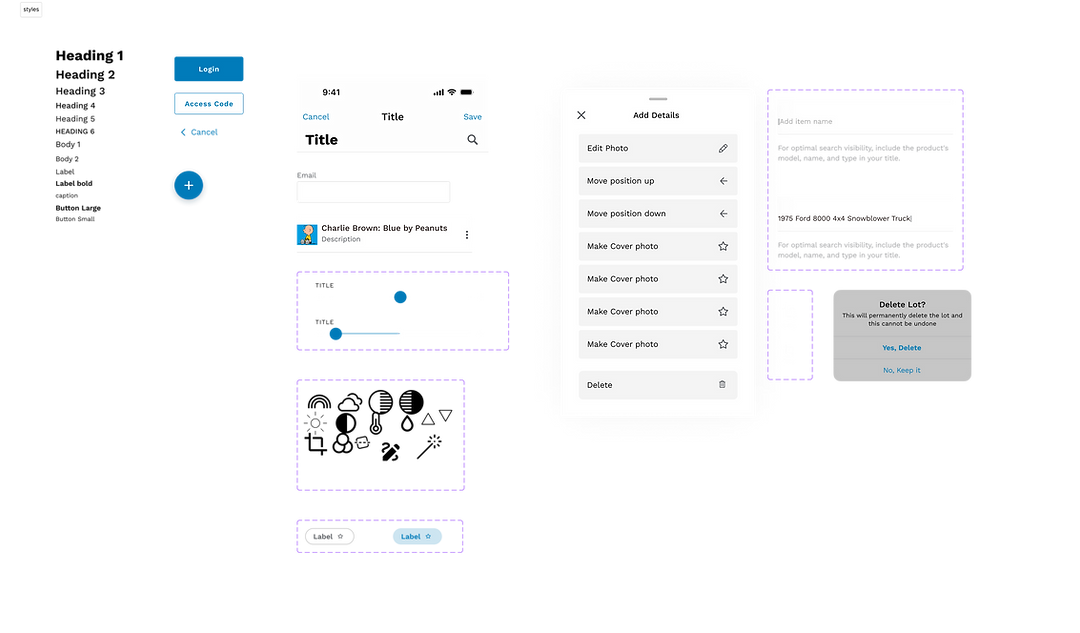
FINAL DESIGNS
Landing Screen/Home Page
The homepage has been redesigned to prioritize the core function of the mobile app, which is inventory management, ensuring efficient access with minimal clicks and adhering to e-commerce patterns. Additionally, we've introduced features for inviting consignors, facilitating collaboration and ensuring the provision of accurate information.
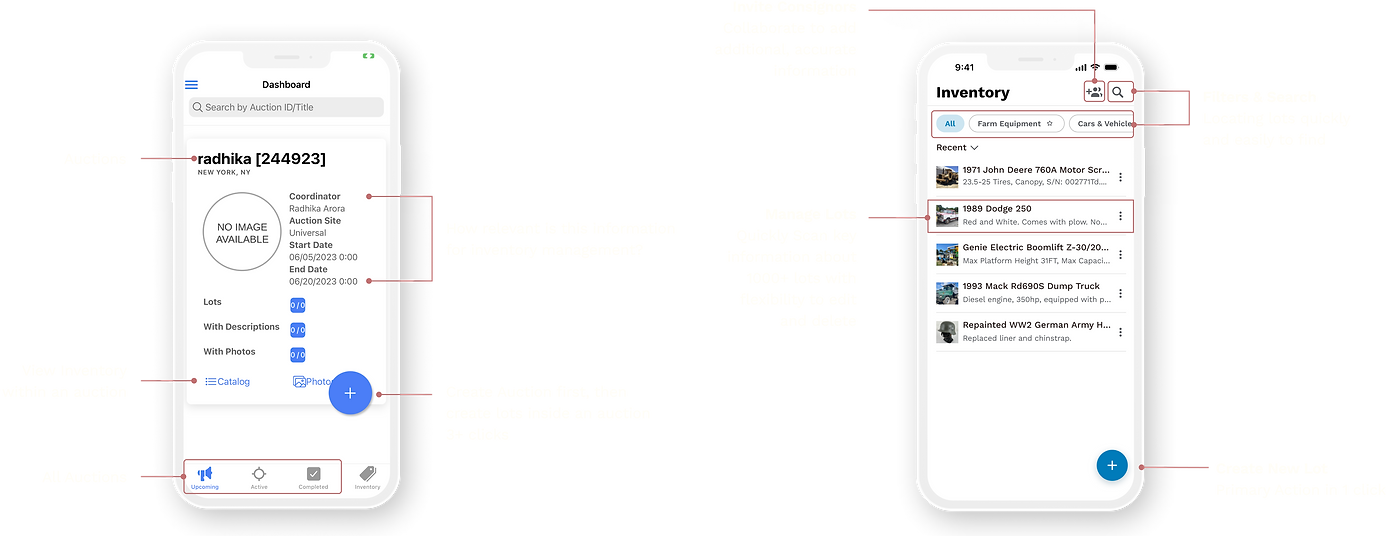

BEFORE:
AFTER:
Create Inventory
The redesign of the "Create New Lot/Item" page emphasizes media management, enabling users to seamlessly click, record, and upload media content on the fly. To enhance usability, only essential information fields are displayed on the screen, reducing scrolling and cognitive overload, while still providing flexibility for users who prefer to add additional details.


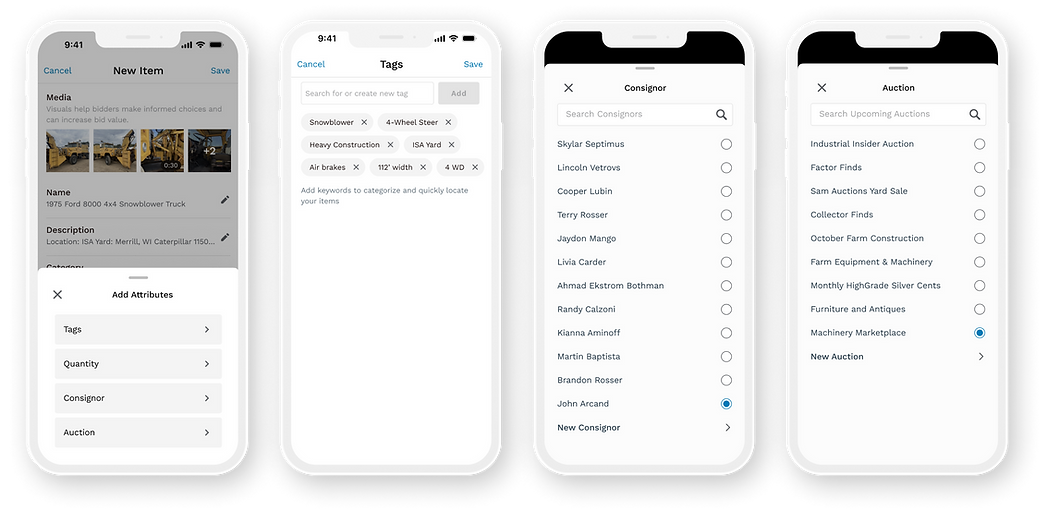
BEFORE:
AFTER:
Media Management
The media management feature is designed to empower auctioneers with robust tools for editing and customizing their media, thereby enhancing its appeal to potential bidders. Alt text functionality is particularly significant, as it plays a crucial role in SEO optimization, potentially driving more users to the auction sites and ultimately increasing bids.
BEFORE:
AFTER:
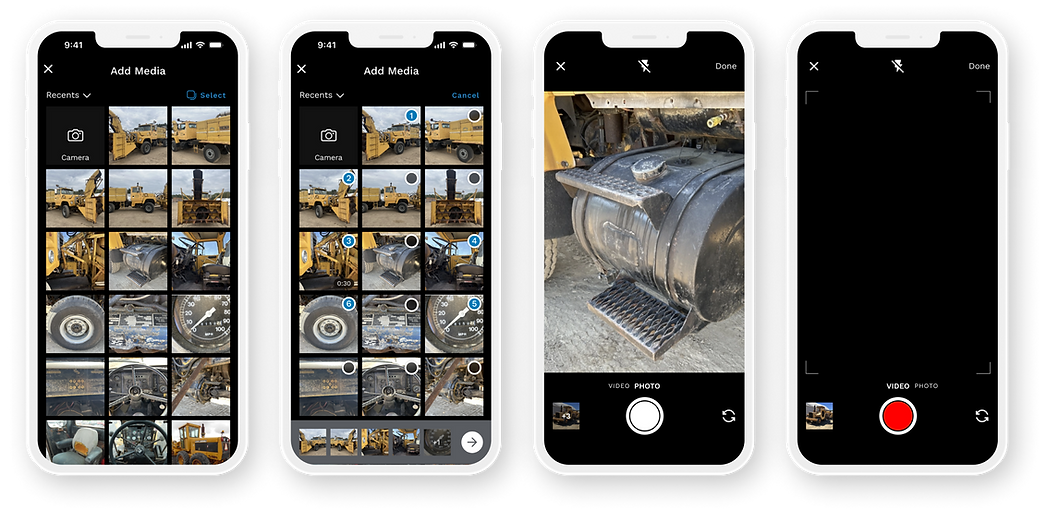


IMPACT
Stakeholder Feedback
Stakeholders appreciated the application's intuitive design and user-friendly patterns, which resembled typical e-commerce platforms, facilitating seamless interactions. They also commended the streamlined media gallery management and editing process, citing its simplicity and alignment with industry standards.
Measuring Impact Post Launch
To measure the impact after the launch, we'll compare how auctions and inventories perform with live bidders between those created with the new app and those from previous auctions managed by the same auctioneers. Additionally, we'll track the increase in app usage and gather feedback from auctioneers and bidders to assess their satisfaction with the app's enhanced features. To mitigate risks, we conducted competitor analysis and followed their best practices to create a user experience similar to e-commerce platforms, making adoption easier.
TAKEAWAYS
As we worked through tight timelines and using react, our focus was on mastering the UX principle of efficiency: completing the primary task of inventory management in as few clicks as possible. We learned to simplify complex workflows, especially for large inventories, ensuring they remained easily navigable and effective for thousands of lots.
